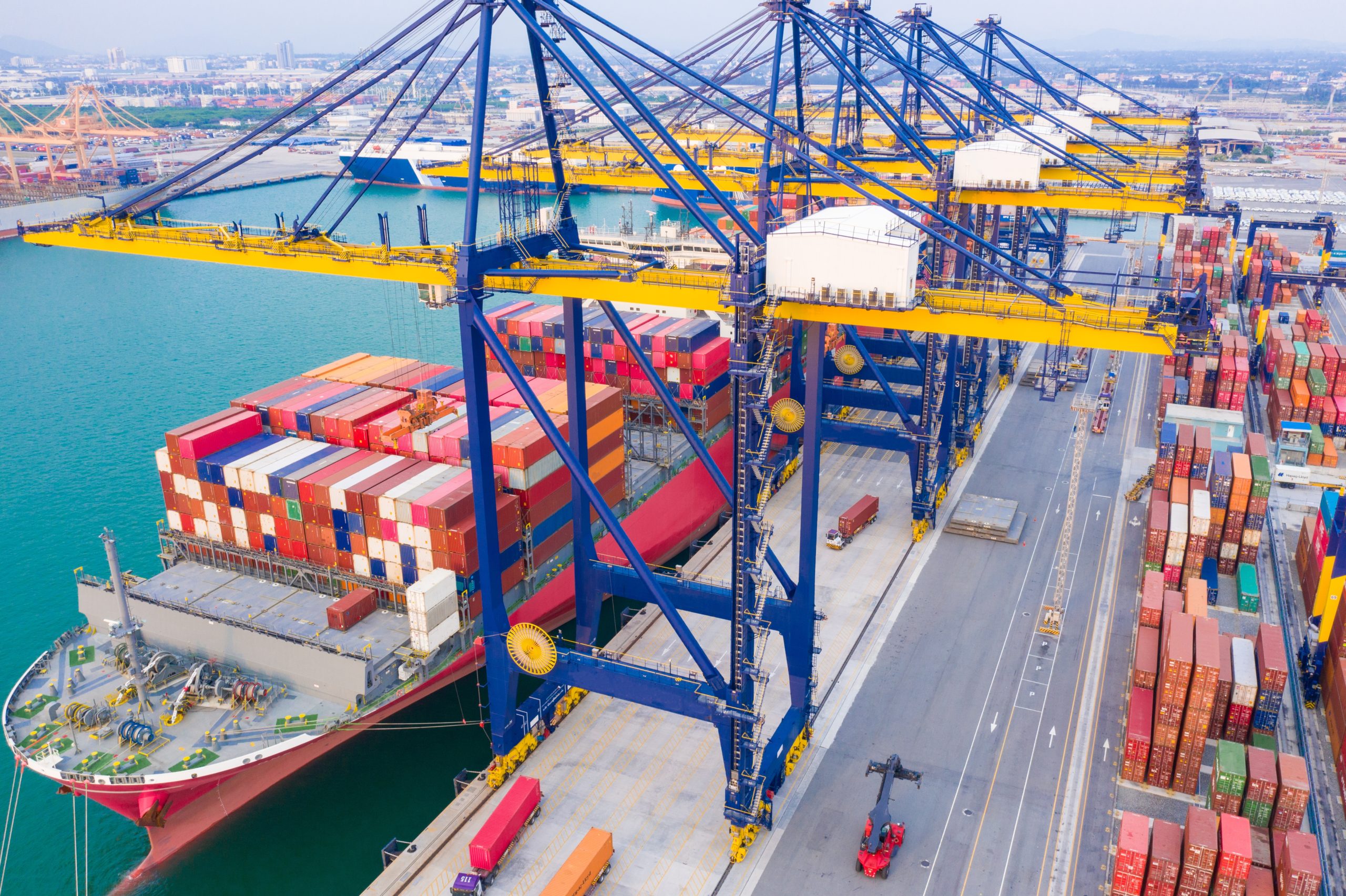With one foot in e-commerce and the other in capital markets, Amazon brand aggregators are raising billions of dollars with the goal of creating new household names and products, while adding increased value to shoppers.
But with multiple brands, business models, and supply chain ecosystems to juggle — the complexities can be costly.
And no matter how large, well-funded or experienced, Amazon aggregators are not immune to today’s many supply chain challenges.
Let’s take a closer look at how each aspect of the supply chain can play a big role in helping brand aggregators overcome market challenges and use a streamlined supply chain to gain a competitive edge.
Table of contents
- Synergize sales and inventory to eliminate stockouts and silos
- Supply chain continuity as part of the aggregator playbook
- Put shipping and order fulfillment on autopilot
Synergize sales and inventory to eliminate stockouts and silos
As an Amazon aggregator, you’re constantly acquiring multiple businesses at various stages of growth and maturity — and you’re doing it at scale.
While the increased purchasing power can help you secure better terms with suppliers and logistical partners, you also have greater complexity in the supply chain — starting with inventory forecasting.
More than perhaps any other type of business, Amazon aggregators are especially prone to expensive inventory problems, including:
- Blind spots in forecasting leading to stockouts across sales channels
- Trapped capital due to overstock and deadstock
- Siloed sales data resulting in inaccurate forecasts
Inaccurate forecasting in just one area of the portfolio, can bring down its entire value.
Rather than take a reactive approach, where you rely on past data to predict future inventory performance, brand aggregators can gain major efficiencies by taking the following steps in inventory forecasting:
- Substitute false zeros. Adjust your forecasting to identify when a brand ran out of stock resulting in lack of sales, then add the sales that should have come on that day. This will prevent you from interpreting the lack of sales as seasonality and forecasting and restocking inaccurately, leading to more stockouts.
- Normalize data by price. Certain niches and products are especially vulnerable to price sensitivity. By acknowledging these variations using your past sales history, you can ensure consistent data is fed into your forecast from day one.
- Pinpoint the outliers. An outlier is an event that occurred only once in your store and wasn’t motivated by anything internal (e.g., a stockout or Amazon listing suspension). It’s important to look at whether outliers are caused by pricing variations, stockouts or any other problem so that you can remove these factors from your forecast and reorder with greater accuracy.
- Adjust for market volatility. The pandemic has caused massive fluctuations for many brands. Audit your sales and inventory data to pinpoint the impact on your forecasts, so you can adjust them to fit their regular pre-pandemic sales levels.
If you’re accustomed to using a static 30-day moving average to forecast your inventory, this more hands-on approach might initially seem like a lot of work — especially if you’re operating across multiple marketplaces and sales channels.
But our research has found that the results can be well worth the effort invested, generating forecasts with an average 80.1% accuracy rate — nearly double the precision rate of typical forecasting methods.
Flieber helps some of the largest Amazon brand aggregators maintain optimal inventory levels across multiple brands and sales channels for increased cash flow and profitability at every level. See how it works.
Supply chain continuity as part of the Amazon aggregator playbook
Approximately 57% of Amazon sellers exclusively use FBA for order fulfillment. But for aggregators with a mix of FBA-exclusive, FBA-first, and other marketplace brands under their umbrella, it can be difficult to synchronize Amazon’s default fulfillment system with other third-party and systems.
But gaps and bottlenecks in the supply chain can lead to missed shipping deadlines, costly delays, and a decline in brand reputation.
On the flip side, the brand aggregators that deliver the maximum value to the market will be those that leverage the supply chain as a key growth lever — one that can help them deepen customer loyalty and elevate each and every brand within their portfolio.
Here are some of the benefits a streamlined supply chain can deliver:
- Beat shipping delays and stay in stock. Competition is fierce in high-growth niches. As the brands in your portfolio become known as a reliable source of the products shoppers want, you’ll see increased brand awareness and customer retention, which will drive down your total cost of customer acquisition (CAC).
- Fast delivery and increased shopper delight. With a fully streamlined supply chain, aggregators can bypass fragmentation to stay fast, nimble and consistently meet customers’ delivery expectations.
- Increased optimization and scalability. By establishing uniformity in supply chain processes, aggregators can minimize the complexity of managing each brand’s inventory, customer base, and location. With a centralized and transparent system, you’ll also be able to increase scalability.
Disruption is going to happen and while greater forecast accuracy can absolutely make a difference in keeping your brands stockout-free, it’s the ability to act on that data in real-time that can really drive increased efficiency across the portfolio.
If you’re struggling to stay on top of the supply chain, look for a system that provides real-time data on your current inventory position, automatically updates days of stock and offers a 360-degree view of your supply chain.
Put shipping and order fulfillment on autopilot
When you acquire a new brand, you get what’s handed to you.
In many cases, that includes bloated manufacturing costs, shipping items to the wrong ports, and zero to no differentiation in the supply chain, leaving the brand open to copy-cat competitors and products.
Once you’ve improved your inventory forecasting and established some level of supply chain continuity, you’ll be in a better position to unify brand orders and take repetitive reordering processes off your plate.
- Audit your suppliers and logistics providers. If you haven’t already, start by auditing your vendors and shipping routes to optimize any efficiencies in your brands’ existing ecosystems. Partner with trustworthy carriers and work with them to improve delivery times, product quality, and productivity.
- Integrate your product lists and vendor data. Centralize all the following information across the brands in your portfolio: supplier and vendor data, product lists, sales, profit margin, sales channels, shipping data, and warehouse data.
- Focus on “the next best action.” With your data working in synchronicity, you can now adopt a “next best action” framework to simplify the analysis and make tangible improvements to the supply chain over time.
After analyzing your latest sales and inventory data, your supply chain optimization system should be able to make highly accurate recommendations for:
- Suggested replenishment dates
- Number of units to restock
- Stockout risk across sales channels
Flieber automatically updates your replenishing dates so that you know exactly when to place orders, and in which quantities, to make sure you’re never out of stock or overstocked. See how it works in real-time.
For high-growth brand aggregators, supply chain can be a problem or an opportunity
Few things undermine success faster than supply chain issues.
In e-commerce, the aggregators that deliver maximum value to the market are those that flip the script on the supply chain conversation and begin adding value at every step.
At Flieber, our inventory optimization platform uses AI to create forecasts that are 40% more accurate than the ones your competitors are using.
As soon as you sync your brands’ supplier information and warehouse locations, Flieber updates you in real-time on any changes in the supply chain via notifications and automations that help you take the next best action.
If you’re ready for greater efficiency across the brand portfolio, reach out to our team and find out how much more simple a streamlined supply chain can be.



-1.png)

